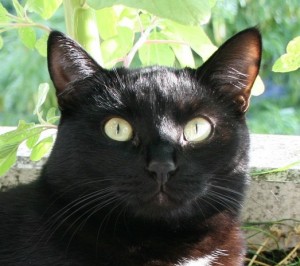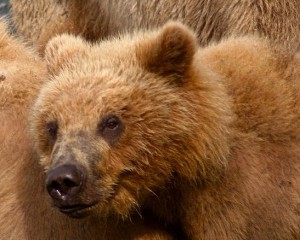There are 260 types of mammals in the group called Carnivora. Animals in carnivora are called carnivorans. Carnivore means meat-eating. The carnivorans can be as small as a weasel, which is only 25 grams (1 oz) and 11 centimetres (4 inches) long. The biggest carnivoran is the Southern Elephant Seal which can weigh as much as 5000 kilograms (11000 lb) and measure up to 6.85 metres (22.5feet) in length. The biggest land Carnivoran is the Polar Bear.
Almost all carnivorans today eat mainly meat. Some have to eat only mean because they can’t digest plants. These include cats, seals and weasels. Others, depending on where they live, are able to eat plants and meat, for example, raccoons and bears. The giant panda is mainly a plant eater but it can still eat fish, eggs and insects. The polar bear which lives in the freezing arctic snow eats meat only.

Carnivorans have sharp teeth. They use both eyes to help them judge distances, so they are able to hunt well. Most of them hunt in packs and are social animals. These habits of theirs help them to attack prey bigger than themselves. Carnivorans are mainly land creatures, but there are some species (like raccoons) which live on trees. They have super strong sharp claws. They have at at least 4 toes on each foot. They have well developed ‘canine’ teeth, sharp pointy teeth with have cutting edges. The last premolar of the upper jaw and the first molar of the lower jaw are used for shearing flesh and bone like a scissors or a shear. These shearing teeth are very developed in the cat family, but are almost missing from bears.
Most Carnivorans have 6 incisors and 2 cone shaped canines in the upper jaw and the lower jaw. But the sea otter has only 4 incisors in the lower jaw and the sloth bear has 4 incisors in the upper jaw. The number of molars and premolars are different among the carnivoran species. All their teeth are deeply rooted and they only get two sets of teeth during their lives – just like humans. Their teeth are not constantly being replaced like the crocodile‘s teeth, nor constrantly growing like a rodent‘s front teeth. Carnivorans have either 4 or 5 digits on each foot. Their first digit on the forepaws is also known as the dew claw – it’s really tiny on most Carnivorans, and missing altogether in some.
Carnivorans like dogs, foxes, skunks, weasels, raccoons, bears and walruses have claws they can’t pull back. Most carnivorans are just plain coloured. They do not have the flashy spotted fur like cats. Cats, hyenas and civets do have spotted or striped coats and they are brightly coloured compared to the dogs and foxes. Also, they can pull their claws in when they are not using them.

Walruses, seals and sea lions are warm-blooded Carnivorans. Their bodies are well insulated with a thick layer of fat and covered with hair to keep them warm. Their digits are not separate but connected by a thick web. This forms flippers to help them to swim well. Their forelimbs and rear limbs act like paddles. Having these kind of limbs helps them to dive to extreme depths. For example, Weddell seal can dive up to 600 metres (2000 feet) deep and stay submerged for over 1 hour. The outer part of the their ear is very small or missing for some species but they have well developed whiskers which grow around the nostrils, above the lips and on other parts of the face of most carnivorans. They have very short tail or no tail at all.
Carnivorans have rather large brains encased in their heavy skull. Since they mainly eat meat, they have a simple digestive system to digest the meat. Unlike plant eaters, which need a more complex digestive system because they have to digest tough plant fibers. Most of the carnivorans have highly developed senses. They have very good vision and hearing. A great number of them have a great sense of smell, like dogs and foxes. They are superb runners. Some are long distance runners, but more commonly they are sprinters. Bears and raccoons may seems slow and clumsy but they are able to run at top speed for short distances.